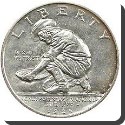 The California Gold Rush (1848–1855) began on January 24, 1848, when gold was found by James W. Marshall at Sutter’s Mill, in Coloma, California. News of the discovery brought some 300,000 people to California from the rest of the United States and abroad. Of the 300,000, approximately half arrived by sea and half came overland.
The California Gold Rush (1848–1855) began on January 24, 1848, when gold was found by James W. Marshall at Sutter’s Mill, in Coloma, California. News of the discovery brought some 300,000 people to California from the rest of the United States and abroad. Of the 300,000, approximately half arrived by sea and half came overland.
The gold-seekers, called “Forty-niners” (as a reference to 1849), often faced substantial hardships on the trip. While most of the newly arrived were Americans, the Gold Rush attracted tens of thousands from Latin America, Europe, Australia, and China. At first, the prospectors retrieved the gold from streams and riverbeds using simple techniques, such as panning. More sophisticated methods of gold recovery developed which were later adopted around the world. At its peak, technological advances reached a point where significant financing was required, increasing the proportion of gold companies to individual miners. Gold worth tens of billions of today’s dollars was recovered, which led to great wealth for a few. However, many returned home with little more than they had started with.
The effects of the Gold Rush were substantial. San Francisco grew from a small settlement to a boomtown, and roads, churches, schools and other towns were built throughout California. A state constitution was written and California became a state in 1850 as part of the Compromise of 1850.
New methods of transportation developed as steamships came into regular service and railroads were built. Agriculture and ranching expanded throughout the state to meet the needs of the settlers. At the beginning of the Gold Rush, there was no law regarding property rights in the goldfields and a system of “staking claims” was developed. The Gold Rush also had negative effects: Native Americans were attacked and pushed off traditional lands and gold mining caused environmental harm.
 Kids Portal For Parents India Kids Network
Kids Portal For Parents India Kids Network





